Styrofoam has become a ubiquitous material in our lives, and it’s no surprise to find it in our refrigerators. But what are the implications of using this material to keep our food cold?
From its impact on the environment to potential health risks, there’s a lot to consider for Styrofoam in your refrigerator. In this blog, we’ll explore the key factors of your need.

Is there supposed to be styrofoam in my refrigerator
No, there should not be Styrofoam in your refrigerator. Styrofoam is not a food-safe material and can contaminate your food if it breaks down or melts.
If you find Styrofoam in your refrigerator, it may have been used for packaging or insulation during transportation or delivery of the refrigerator. You should remove it and dispose of it properly.
Keep your refrigerator clean and free from any foreign objects. If you have any concerns or questions about the use of Styrofoam in your refrigerator, contact the manufacturer or a professional appliance repair service for assistance.
The Benefits and Drawbacks of Styrofoam in Your Refrigerator
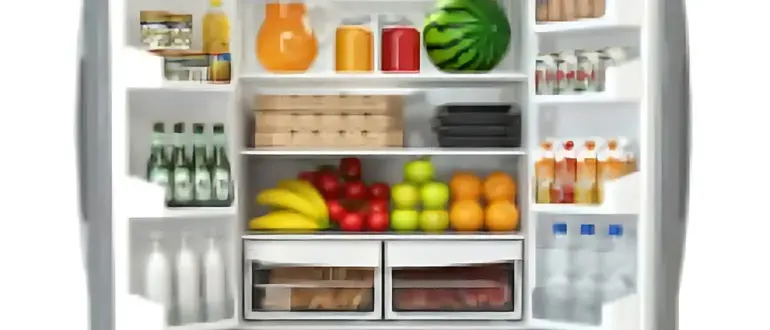
There are some benefits and drawbacks of styrofoam in your refrigerator.
Benefits:
Efficient Insulation:
Styrofoam is an excellent insulator, which makes it a popular choice for refrigerators. It helps to maintain a consistent temperature inside the refrigerator, reducing energy consumption and keeping your food fresh for longer.
Lightweight and Durable:
Styrofoam is lightweight and durable, making it easy to transport and handle. It can withstand impacts and bumps, protecting your food and drink from damage during transportation.
Affordable:
Styrofoam is a cost-effective material, making it a popular choice for refrigerators. It is less expensive than other types of insulation, such as fiberglass, and is readily available in the market.
Drawbacks:
Environmental Impact:
Styrofoam is not biodegradable and can take hundreds of years to decompose. When disposed of improperly, it can harm the environment and wildlife. Dispose of styrofoam responsibly.
Health Risks:
Styrofoam can release toxic chemicals when heated, which can pose a health risk if ingested or inhaled. It’s essential to avoid heating styrofoam or using it to store hot food and drinks.
Limited Reusability:
Styrofoam is not a sustainable material and has limited reusability. It is used a few times before begins to break down and lose insulating properties making it unsuitable for long-term use.
Alternative Options:
There are several alternative options available for insulating refrigerators that are more sustainable and eco-friendly. Some options include using natural materials such as cork or wool or choosing a refrigerator that uses energy-efficient technology.
Alternatives to Styrofoam in Refrigerators
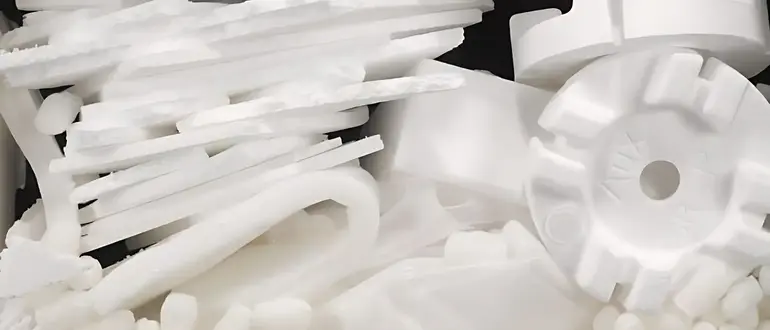
There are several alternative materials available for insulating refrigerators that are more sustainable and environmentally friendly than Styrofoam.
Natural Fiber Insulation:
Natural fiber insulation, such as wool or cotton, is an excellent alternative to Styrofoam. It is environment friendly and biodegradable. Natural fibers are excellent at regulating temperature, keeping your food fresh for longer.
Vacuum Insulation Panels:
Vacuum Insulation Panels, also known as VIPs, are an innovative technology that provides excellent insulation with minimal material.
VIPs are ultra–thin and lightweight, making them ideal for use in refrigerators. They’re also highly efficient at retaining cold temperatures, which is essential for keeping food fresh.
Recycled Plastic Insulation:
Recycled plastic insulation, made from recycled plastic bottles, is another excellent alternative to Styrofoam.
It’s more eco-friendly than Styrofoam and has a lower carbon footprint. Plus, it’s a cost-effective option that provides excellent insulation.
Aerogel Insulation:
Aerogel insulation is a high-performance material that’s been used in a variety of applications, including refrigeration.
It’s an excellent alternative to Styrofoam because it’s incredibly lightweight and has an excellent insulating capacity. It’s also more expensive than other options.
Phase-Change Materials:
Phase-change materials are another alternative to Styrofoam. These materials change phase from a solid to a liquid, absorbing heat.
This property makes them ideal for use in refrigeration to help regulate temperatures and keep food fresh.
Polystyrene-Free Insulation:
Polystyrene-free insulation is the primary element of Styrofoam. It’s made from other materials like polyurethane or polyethylene.
These materials are more eco-friendly and provide excellent insulation for refrigerators.
Cork Insulation:
Cork insulation is a natural and sustainable option for refrigeration. Cork is an excellent insulator and has natural antimicrobial properties, making it an excellent choice for food storage.
What are the Health Risks of Using Styrofoam in Your Refrigerator?
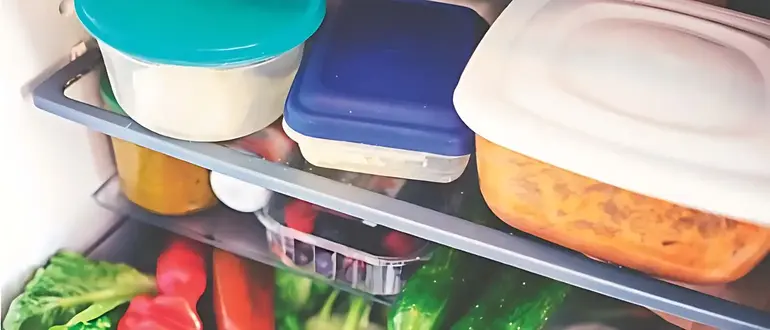
There are health risks associated with using Styrofoam in your refrigerator.
Chemical Leaching:
Styrofoam can leach potentially harmful chemicals into your food and expose heat or acidic substances. These chemicals can affect your health in the long run, over a prolonged period.
Environmental Pollution:
Styrofoam is non-biodegradable and takes hundreds of years to decompose. It can harm the environment and wildlife.
Health Effects on Wildlife:
When Styrofoam is disposed of improperly, it can harm wildlife mistaking it for food, which causes a range of health problems for animals.
Food Contamination:
Styrofoam can easily break into small pieces and get mixed with your food, causing accidental ingestion and potential choking hazards.
Increased Risk of Cancer:
Styrofoam contains a substance called Styrene, which is classified as a possible human carcinogen by the International Agency for Research on Cancer. Chronic exposure to this substance has been linked to an increased risk of cancer.
Proper Disposal Techniques for Styrofoam in Your Refrigerator
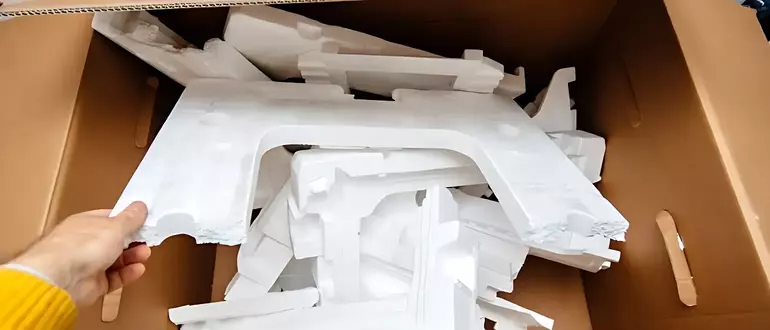
Here are some proper disposal techniques for Styrofoam in your refrigerator:
Recycling:
One of the best ways to dispose of Styrofoam is by recycling it. Check with your local recycling program to see if they accept it. Make sure to clean the Styrofoam thoroughly and remove any labels or stickers.
You can also use a Styrofoam densifier to compress and melt Styrofoam into a denser material that can be recycled more easily.
Reuse:
Another way to dispose of Styrofoam is by reusing it. You can use Styrofoam containers to store non-food items like small toys, office supplies, or craft materials.
Styrofoam can also be used as insulation for gardening projects or as a protective material for shipping fragile items.
Landfill:
The next option is to dispose of Styrofoam in the landfill. This should be the last resort as Styrofoam takes hundreds of years to decompose and can release toxic chemicals into the environment.
Try to minimize the amount by breaking it down into smaller pieces and by placing it in a plastic bag to prevent it from of scattering.
Donate:
Consider donating Styrofoam to local organizations. For example, schools, art centers, or community centers can be interested in using it for art projects or insulation.
Ways to Minimize Your Use of Styrofoam in Your Refrigerator
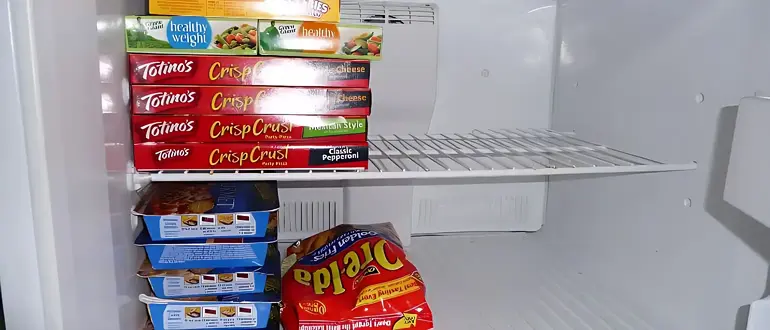
There are some ways to minimize your use of Styrofoam in your refrigerator:
Use Glass or Plastic Containers:
One of the simplest ways to reduce your use of Styrofoam in the refrigerator is by switching to glass or plastic containers. These containers are durable and reusable. They are more eco-friendly.
Invest in Silicone Food Bags:
Another alternative to Styrofoam containers is silicone food bags. These bags are leak-proof, airtight, and can be used over and over again.
They come in different sizes and shapes, making them perfect for storing various types of food, including liquids.
Consider Reusable Food Wrap:
Instead of using plastic wrap or aluminum foil, try using reusable food wrap. These wraps are typically made of beeswax, cotton, and jojoba oil and can be used multiple times. They are perfect for wrapping fruits and vegetables, sandwiches, and cheese.
Purchase Reusable Ice Packs:
If you frequently use ice packs to keep your food cold in the refrigerator, consider buying reusable ones. These ice packs can be frozen over and over again, reducing the need for disposable Styrofoam ones.
Use Mason Jars for Drinks:
If you enjoy drinking beverages out of Styrofoam cups, try using Mason jars instead. These jars come with lids and straws, making them perfect for on-the-go drinks. They are reusable and eco-friendly.
FAQs
How Can I Dispose Of Styrofoam In My Refrigerator?
Styrofoam should be disposed of properly to minimize the environmental and health risks associated with it. Styrofoam can be reused or disposed of in landfill as a last resort. Try to break it down into smaller pieces and place them in a plastic bag to prevent scattering.
What Should I Do If I Accidentally Heat Up Styrofoam In The Microwave?
Never heat up Styrofoam in the microwave. Transfer your food to a new container immediately and dispose of the Styrofoam container properly.
Is Styrofoam Safe To Use For Cold Foods In My Refrigerator?
Styrofoam is generally considered safe for use with cold foods in refrigerators. Avoid using it with acidic or spicy foods as these can cause the release of toxic chemicals. Properly dispose of Styrofoam containers after use to minimize environmental impacts.
Can Styrofoam Be Recycled?
Styrofoam can be recycled, but check with your local recycling facility to see it. Many facilities don’t accept Styrofoam due to its low density and difficulty in recycling. Styrofoam should be reused or disposed of in a landfill as a last resort.
Final Thoughts on Styrofoam in Your Refrigerator
Styrofoam should not be in your refrigerator as it is not a food-safe material and contaminates your food. If you find any Styrofoam in your refrigerator, remove and dispose of it properly.
Keeping your refrigerator clean and free from any foreign objects is crucial. If you have any concerns or questions, contact the manufacturer or a professional appliance repair service for assistance.
